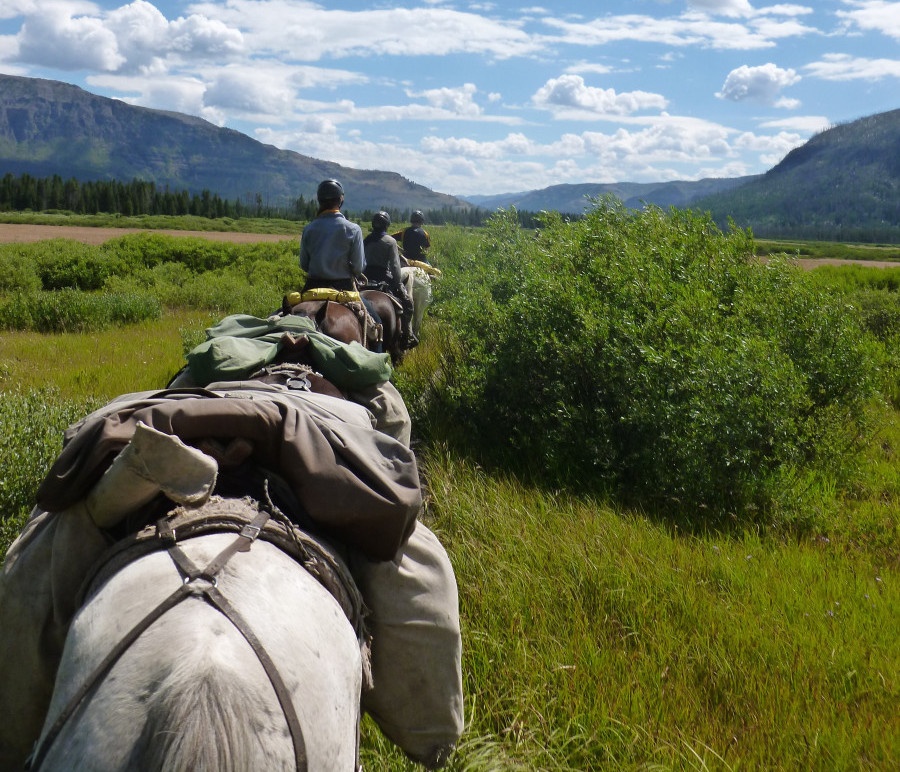Stan has insulin-dependent diabetes with an insulin pump on a wilderness trip. As his trip leader, you talked with Stan about his diabetes, and he told you about his daily management habits and his sick-day plan. He gave you a bag of redundant diabetic supplies to carry for him. Over the past week, his diabetes has been under control, and he has been having a great time on the trip.
This evening, he tells you he’s not doing well and thinks he must leave the field. He has experienced symptoms of a flu-like illness the past few days, and today, he became nauseated and vomited twice. He doesn’t feel like eating.
He's concerned his blood sugar will rise beyond his control. Since the weather turned colder this week, he's also not sure whether his pump and glucometer are working properly.
Stan thinks he will be fine overnight and asks to be evacuated tomorrow morning, which will be a four-mile hike to the trailhead.
At 5:00 am Stan’s tentmate wakes you. “Stan is really sick,” he says.
SOAP Report
Subjective
The patient is a 25-year-old male with insulin-dependent diabetes whose chief complaint is an altered mental status, possibly secondary to high blood sugar levels. The patient was sleeping in his tent. His tentmate reports being woken by the patient moaning.
Objective
Patient Exam
There is nothing found in the head-to-toe assessment. Glucometer reading is “high.” His tentmate said the patient woke up last night and tested his urine and said he “was spilling ketones.”
Vital Signs
|
Time |
0515 hrs |
|
LOR |
Awake but disoriented. A+Ox2. Patient is not responding clearly to questions |
|
HR |
90, strong, regular |
|
RR |
14, regular, unlabored |
|
SCTM |
Mucous membranes pink, skin warm, dry |
|
Pupils |
PERRL |
|
BP |
Radial pulses present |
|
Temp |
99° (37°C) oral |
History
|
Symptoms: |
Altered mental status; patient is lethargic, confused, and disoriented. He answers questions reliably. No breath odor noted. |
|
Allergies: |
None |
|
Medications: |
Patient has insulin, glucagon and an oral sugar tube. We know he took insulin last evening on schedule and adjusted based upon his glucometer reading. We do not have details on those readings. |
|
Pertinent Hx: |
Patient has insulin-dependent diabetes. |
|
Last in/out: |
Patient ate a small dinner last night, no breakfast today. Patient has been well hydrated. Fluid intake or output today is unknown. |
|
Events: |
Patient has been ill with flu-like symptoms and vomiting twice over the past 48 hrs. Yesterday he initiated his sick day plan and requested evacuation. |
What is your Assessment and Plan? Pause here to formulate your answer, then continue reading.
Assessment
- Patient has insulin-dependent diabetes with altered mental status and possible hyperglycemia.
- There is no sign of injury; no MOI for spine or head injury.
Plan
- Rub small amounts of sugar into the patient's gum (in case this is hypoglycemia) with airway monitoring.
- Evacuate the patient promptly.
- No fluid by mouth due to the patient's altered mental status (plus he can’t hold a cup and drink).
Anticipated problems
- Patient’s diabetic problem worsens.
Comments
Patients with untreated diabetes who have defective or insufficient insulin or who become ill may develop a high blood sugar level. Consequences of this may be dehydration and electrolyte disturbances as the kidneys try to eliminate the excess sugar and acid-base disturbances as cells starved for sugar turn to alternative energy sources.
Hyperglycemia develops more slowly than hypoglycemia but can come on within a few hours. The first symptoms are often loss of appetite, nausea, vomiting, thirst, and increased volume of urine output. The patient's breath may have a fruity odor from the metabolism of fats as an energy source, although this doesn't happen in every patient. The patient may also have abdominal cramps or pain and signs of dehydration, including flushed, dry skin.
This patient has a complex metabolic disturbance and needs the care of a physician. Treatment by a Wilderness First Responder (WFR) is supportive: airway maintenance, monitoring vital signs, and treatment for shock; fluids, maintain temperature, keep comfortable. A good evacuation plan is part of this list.
A person with diabetes can test their sugar with a portable glucometer. Ketone strips are important in evaluation of hyperglycemia, alerting us to the patient becoming acidotic and “spilling ketones” in their urine.
When we're sick, we're under stress and we use hormones to fight the infection. Some of these hormones both raise blood sugar and interfere with insulin. It's more challenging for someone with diabetes to regulate blood sugar when they are sick. These people should have a “sick day” plan, adjustments in their insulin dosage they have previously discussed with their physician. The components of a sick day plan include insulin adjustment, food and fluid intake, and triggers for evacuation such as urine ketone, hyperglycemia, and vomiting.
If this was early hyperglycemia and the patient was oriented and reliable, it’s plausible that they will attempt to compensate for the rising blood sugar by increasing their insulin dose. Should you give this patient insulin? No! As a WFR this is beyond your scope of practice. There is a real risk, if you make a mistake, of harming this patient.
End of the Tale
The satellite phone connection is good and helicopter evacuation is arranged. Within a few hours you are briefing the flight paramedic on the patient’s condition and recent history.
Several hours later you check in with your base and find out that Stan has been admitted to the hospital with a diagnosis of hyperglycemia. They are working to correct the metabolic imbalances, and treat the underlying flu-like illness that triggered the problem, and expect that he will do fine, although he may be in the hospital for a few days.
Written By
Gates Richards
Gates Richards has been involved in outdoor education and EMS since the early '90s. Over the years he's worked outdoor programming throughout the Rockies, Pacific Northwest and Alaska. He's worked urban EMS in DC, WA, CO and WY. Gates began teaching for NOLS Wilderness Medicine in 1998 and has been awarded the Wilderness Medical Society's Warren Bowman award for contributions to wilderness medicine by a non-physician as well as the National Collegiate EMS Foundation's Distinguished Service Award. He was the former Associate Director and is currently a NOLS Wilderness Medicine Faculty member.



